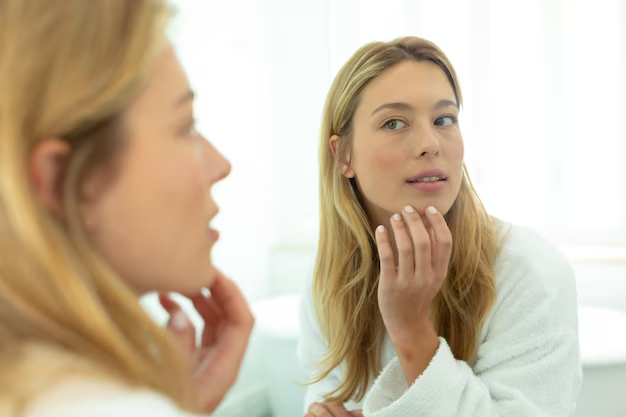Understanding and Managing the Spread of Vitiligo: Key Factors and Insights
Vitiligo, a skin condition characterized by the loss of pigment cells known as melanocytes, often presents with noticeable patches of lighter skin. For many, it’s not just the presence of these patches that causes concern, but also how the condition may spread over time. Understanding what causes vitiligo to spread and how to manage it can be empowering for those affected. This article delves into the intricacies of vitiligo's progression, highlighting key factors and offering practical insights to help you navigate the journey.
What is Vitiligo?
Before exploring its spread, it's essential to understand what vitiligo is. Vitiligo is an autoimmune disorder where the body's immune system mistakenly attacks its melanocytes. This results in patches of skin that lose their natural color and appear lighter.
Types of Vitiligo
Vitiligo is often categorized into several types based on how the depigmentation appears:
- Generalized Vitiligo: The most common form, characterized by scattered patches throughout the body.
- Segmental Vitiligo: Typically affects one area or side of the body and often starts at a younger age.
- Focal Vitiligo: Limited to one or a few areas, less widespread than other types.
Understanding these types provides context as to why vitiligo might behave differently in each individual.
Factors Influencing the Spread of Vitiligo
The spread of vitiligo can be attributed to a combination of genetic, environmental, and immunological factors. Recognizing these can help in anticipating and potentially mitigating its expansion.
Genetic Factors
Family History is a significant contributor: About 30% of people with vitiligo have a relative with the condition or with other autoimmune diseases. While genetics alone don't determine the spread, they set the foundation for risk.
Environmental Triggers
Various environmental factors can contribute to the initiation and spread of vitiligo:
- Sunburn or skin trauma might trigger or worsen vitiligo patches. The Koebner phenomenon explains how injury to the skin can induce new patches in some individuals.
- Stress: Emotional and physical stress may exacerbate the condition, leading to the progression of vitiligo.
Autoimmune Mechanisms
Vitiligo is part of the autoimmune spectrum, where immune dysregulation plays a critical role. Immune cells mistakenly target melanocytes, and fluctuations in this immune activity can lead to the spread.
Oxidative Stress
Research indicates that oxidative stress, an imbalance between free radicals and antioxidants, may contribute to melanocyte damage. Factors like pollution, diet, and lifestyle can influence this balance, potentially impacting vitiligo's progression.
Lifestyle and Management Strategies
While there is no cure for vitiligo, various strategies can help manage its spread and improve quality of life.
Sun Protection
Protecting the skin from sun damage is crucial:
- Use Sunscreen: Opt for broad-spectrum sunscreens with at least SPF 30. It helps prevent sunburn and minimize contrasting pigmentation between affected and unaffected areas.
- Wear Protective Clothing: Hats, long sleeves, and sunglasses can further safeguard your skin.
Emotional and Stress Management
Managing stress is beneficial for overall health and may play a role in controlling vitiligo:
- Mindfulness and Meditation: Practices that promote relaxation can help alleviate stress.
- Therapy and Support Groups: Connecting with others facing similar challenges can provide emotional support and coping strategies.
Diet and Nutrition
A balanced diet rich in antioxidants could potentially benefit those with vitiligo:
- Incorporate: Fruits, vegetables, nuts, and seeds to combat oxidative stress.
- Avoid: Foods you're sensitive to, as certain foods might exacerbate immune responses.
Available Treatment Options
Various treatments can help in managing vitiligo spread, though their effectiveness varies from person to person:
Topical Treatments
- Corticosteroids: These can help reduce inflammation and slow the immune system's activity against melanocytes.
- Calcineurin Inhibitors: May help in cases where corticosteroids are not recommended.
Light Therapy
Phototherapy involves using controlled exposure to ultraviolet light to stimulate melanocyte activity. This requires professional oversight to be effective.
Surgical Options
In some cases, surgical treatments may be considered:
- Skin Grafting: Transplanting skin from unaffected areas to depigmented spots.
- Melanocyte Transplantation: Implanting melanocytes into the skin.
New and Emerging Treatments
Research in vitiligo is ongoing, with promising developments such as JAK inhibitors and other novel treatments. Keeping abreast of these can provide options should current treatments prove unsatisfactory.
Cultivating a Supportive Environment
Support plays a crucial role in managing vitiligo. Whether it's through educational resources, community support, or professional guidance, having a reliable support system can significantly impact one's journey with vitiligo.
Building Connections
Engaging with support groups or online communities can provide encouragement and practical advice.
Professional Support
Having a compassionate healthcare provider who understands your unique circumstances can enhance treatment strategies and provide reassurance.
Understanding the Psychological Impact
Vitiligo is not just a physical condition; its psychological impact is profound. Addressing these aspects is vital for holistic management.
Self-Esteem and Body Image
Vitiligo can affect one's self-esteem and perception. Building confidence through therapy, positive self-talk, and supportive connections can help manage these challenges.
Educating Peers and Family
Understanding and empathy from those around you can transform your experience. Educating others about vitiligo helps dismantle myths and foster a supportive environment.
Embracing vitiligo and its challenges while taking proactive steps can empower you on your journey. Understanding the factors that influence its spread and managing them accordingly is key in living harmoniously with this condition.
Key Takeaways:
- 🧬 Genetic Influence: Family history may increase risk, but isn’t the sole determinant.
- 🌞 Sun Protection: Always use sunscreen and protective clothing.
- 🧘 Manage Stress: Incorporate stress-reduction practices into your daily routine.
- 🍎 Balanced Diet: Consume antioxidant-rich foods to combat oxidative stress.
- 💪 Seek Support: Connect with support groups and seek psychological help as needed.
Engaging with resources and support networks while staying informed on emerging treatment options ensures you navigate vitiligo effectively, with resilience and understanding.
